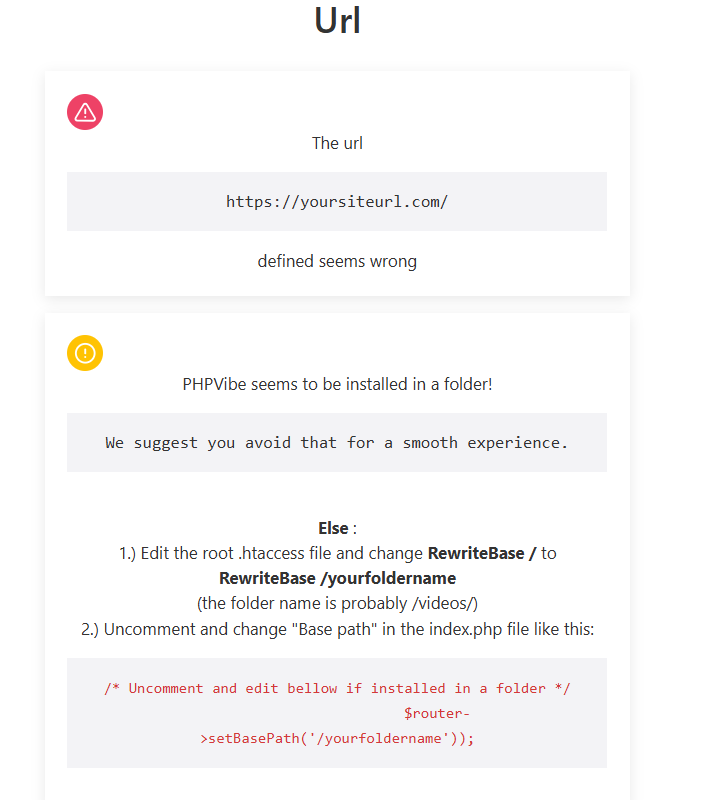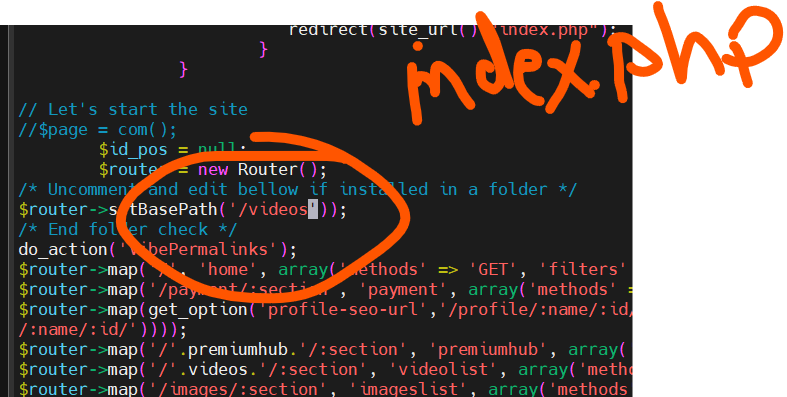Step-by-Step Guide to Install PHPVibe
Here’s how you can install PHPVibe on your server:
1. System Requirements
Before starting, ensure your server meets the PHPVibe system requirements:
- Web Server: Apache or Nginx
- PHP Version: 7.3 or higher
- Database: MySQL 5.7+ or MariaDB 10.2+
- FFmpeg: Installed and properly configured
If you haven't configured your server yet, follow the PHPVibe system requirements guide.
2. Download PHPVibe
- Go to the official PHPVibe website and purchase a license.
- After purchase, download the PHPVibe package (usually a
.zipfile) from the customer portal.
3. Upload Files to Your Server
- Log in to your server via FTP or cPanel File Manager.
- Upload the PHPVibe
.zipfile to your desired directory (e.g.,/var/www/html/or your domain folder). - Extract the contents of the
.zipfile:- If using the terminal:
unzip phpvibe.zip -d /var/www/html/
- If using the terminal:
4. Set File Permissions
Ensure the following directories are writable:
/cache/uploads/media
Set permissions:
sudo chmod -R 755 /var/www/html/cache /var/www/html/uploads /var/www/html/media
sudo chown -R www-data:www-data /var/www/html/5. Create a MySQL Database
- Log in to your MySQL/MariaDB server:
mysql -u root -p - Create a database and user for PHPVibe:
CREATE DATABASE phpvibe; CREATE USER 'phpvibe_user'@'localhost' IDENTIFIED BY 'your_password'; GRANT ALL PRIVILEGES ON phpvibe.* TO 'phpvibe_user'@'localhost'; FLUSH PRIVILEGES; EXIT;
6. Configure Apache/Nginx
For Apache
Enable mod_rewrite:
sudo a2enmod rewrite
sudo systemctl restart apache2Edit the virtual host configuration:
sudo nano /etc/apache2/sites-available/phpvibe.confExample configuration:
<VirtualHost *:80>
ServerName yourdomain.com
DocumentRoot /var/www/html
<Directory /var/www/html>
AllowOverride All
</Directory>
</VirtualHost>Restart Apache:
sudo systemctl restart apache2For Nginx
Edit the Nginx configuration:
sudo nano /etc/nginx/sites-available/phpvibeExample configuration:
server {
listen 80;
server_name yourdomain.com;
root /var/www/html;
index index.php index.html;
location / {
try_files $uri $uri/ /index.php?$args;
}
location ~ \.php$ {
include snippets/fastcgi-php.conf;
fastcgi_pass unix:/var/run/php/php7.4-fpm.sock;
fastcgi_param SCRIPT_FILENAME $document_root$fastcgi_script_name;
include fastcgi_params;
}
}Enable the site and restart Nginx:
sudo ln -s /etc/nginx/sites-available/phpvibe /etc/nginx/sites-enabled/
sudo systemctl restart nginx7. Run the PHPVibe Installer
- Open a browser and navigate to your domain (e.g.,
http://yourdomain.com). - Follow the on-screen installation wizard:
- Enter your database details (
phpvibe,phpvibe_user, andyour_password). - Set up the admin account (username, email, password).
- Enter your database details (
- Complete the installation.
8. Post-Installation
- Delete the installation files for security:
rm -rf /var/www/html/install - Set permissions for security:
sudo chmod -R 644 /var/www/html/
9. Test the Site
- Log in to the PHPVibe admin panel (e.g.,
http://yourdomain.com/admin). - Verify that videos upload and play correctly.
- Check FFmpeg functionality for video conversion.
10. Enable SSL (Optional)
Secure your site with HTTPS using a free SSL certificate from Let's Encrypt:
sudo apt-get install certbot python3-certbot-apache
sudo certbot --apache -d yourdomain.comTroubleshooting Tips
- White Screen/500 Errors: Check permissions and error logs:
tail -f /var/log/apache2/error.log - Database Connection Issues: Verify credentials in
config.php. - FFmpeg Errors: Ensure FFmpeg is installed and available in the server path:
ffmpeg -version
Let me know if you need additional assistance!

